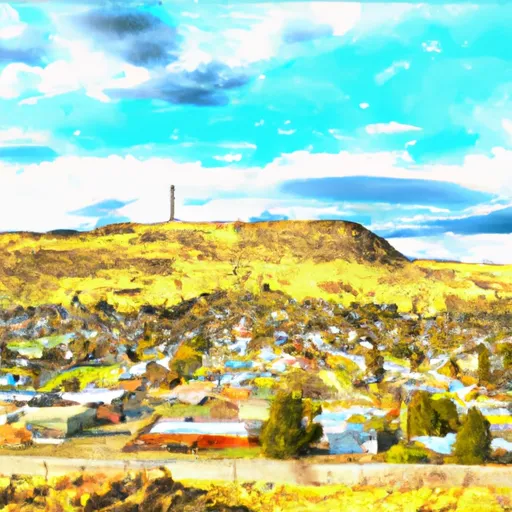-
 Snoflo Premium
Snoflo Premium
Get unlimited access to all our content
With no Ad interruptions! - Start Your Free Trial Login with existing account
Ronan
Eden Index
Climate
7.5
•
Recreation
2.7
•
Community
2.2
•
Safeguard
4.5/10

Ronan, Montana is a charming town located in Lake County, nestled amidst the scenic landscapes of the Rocky Mountains. The town experiences a moderate climate, with warm summers and cold winters. Summers are pleasant, with temperatures ranging from the mid-70s to mid-80s Fahrenheit, perfect for outdoor activities. Winters can be quite cold, with temperatures often dropping below freezing, providing opportunities for winter sports enthusiasts.
Hydrologically, Ronan is blessed with an abundance of natural resources. It is situated near the beautiful Flathead Lake, the largest freshwater lake west of the Mississippi River. This pristine lake offers a myriad of recreational activities such as fishing, boating, kayaking, and swimming. Additionally, the nearby Flathead River provides excellent opportunities for river rafting and fly fishing.
Outdoor enthusiasts will be delighted by the numerous recreational opportunities Ronan has to offer. The surrounding mountains and forests provide ample opportunities for hiking, camping, and wildlife viewing. The Flathead National Forest, located nearby, features stunning trails that lead to breathtaking vistas and secluded lakes. Additionally, the Mission Mountains Wilderness Area offers challenging hikes and opportunities for backpacking adventures.
In conclusion, Ronan, Montana is a haven for outdoor enthusiasts, offering a moderate climate, abundant hydrological resources, and a wide range of outdoor recreation opportunities.
What is the Eden Index?
The Snoflo Eden Index serves as a comprehensive rating system for regions, evaluating their desirability through a holistic assessment of climate health, outdoor recreation opportunities, and natural disaster risk, acknowledging the profound impact of these factors on livability and well-being.
Climate Health Indicator (CHI): 7.5
Ronan receives approximately
385mm of rain per year,
with humidity levels near 77%
and air temperatures averaging around
8°C.
Ronan has a plant hardyness factor of
5, meaning
plants and agriculture in this region thrive during a short period during spring and early summer. Most
plants will die off during the colder winter months.
By considering the ideal temperature range, reliable water supplies, clean air, and stable seasonal rain or snowpacks, the Climate Health Indicator (CHI) underscores the significance of a healthy climate as the foundation for quality living.
A healthy climate is paramount for ensuring a high quality of life and livability in a region, fostering both physical well-being and environmental harmony. This can be characterized by ideal temperatures, reliable access to water supplies, clean air, and consistent seasonal rain or snowpacks.
Weather Forecast
Streamflow Conditions
Pend Oreille
Area Rivers
Pend Oreille
Snowpack Depths
Pend Oreille
Reservoir Storage Capacity
Pend Oreille
Groundwater Levels
Recreational Opportunity Index (ROI): 2.7
The Recreational Opportunity Index (ROI) recognizes the value of outdoor recreational options, such as parks, hiking trails, camping sites, and fishing spots, while acknowledging that climate plays a pivotal role in ensuring the comfort and consistency of these experiences.
Access to outdoor recreational opportunities, encompassing activities such as parks, hiking, camping, and fishing, is crucial for overall well-being, and the climate plays a pivotal role in enabling and enhancing these experiences, ensuring that individuals can engage in nature-based activities comfortably and consistently.
Camping Areas
| Campground | Campsites | Reservations | Toilets | Showers | Elevation |
|---|---|---|---|---|---|
| Big Arm State Park | 40 | 2,932 ft | |||
| Wayfarers State Park | 30 | 2,959 ft | |||
| North Crow Creek | None | 3,753 ft | |||
| Finley Point State Park | 16 | 2,983 ft | |||
| Yellow Bay State Park | 5 | 2,905 ft | |||
| West Shore State Park | 26 | 3,069 ft |
Nearby Ski Areas
Catastrophe Safeguard Index (CSI):
The Catastrophe Safeguard Index (CSI) recognizes that natural disaster risk, encompassing floods, fires, hurricanes, and tornadoes, can drastically affect safety and the overall appeal of an area.
The level of natural disaster risk in a region significantly affects safety and the overall livability, with climate change amplifying these risks by potentially increasing the frequency and intensity of events like floods, fires, hurricanes, and tornadoes, thereby posing substantial challenges to community resilience and well-being.
Community Resilience Indicator (CRI): 2.2
The Community Resilience Indicator (CRI) recognizes that education, healthcare, and socioeconomics are crucial to the well-being of a region. The CRI acknowledges the profound impact of these elements on residents' overall quality of life. By evaluating educational resources, healthcare accessibility, and economic inclusivity, the index captures the essential aspects that contribute to a thriving community, fostering resident satisfaction, equity, and social cohesion.

